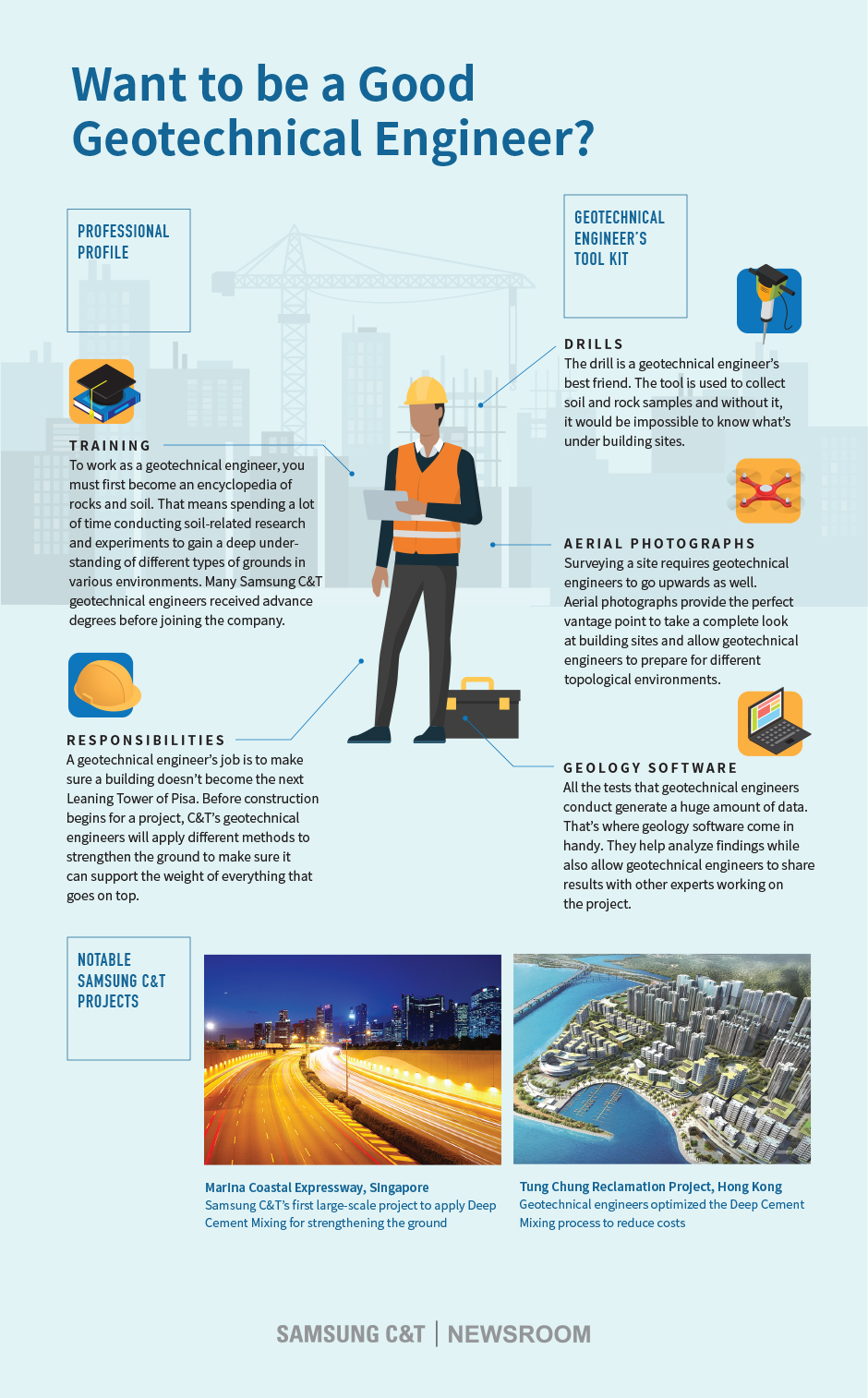How Geotheta can Save You Time, Stress, and Money.
How Geotheta can Save You Time, Stress, and Money.
Blog Article
How Geotheta can Save You Time, Stress, and Money.
Table of ContentsUnknown Facts About GeothetaWhat Does Geotheta Do?Little Known Facts About Geotheta.Everything about Geotheta
They collaborate with civil engineers, architectural designers, designers, and other professionals to integrate geotechnical factors to consider right into the general project design and construction procedure. This needs efficient teamwork, control, and interaction to guarantee that the geotechnical aspects straighten with the job objectives and meet governing demands.Mining & Products Design: Principles of exploration, penetration prices, and elements influencing the option of exploration technique. Blowing up methods in surface area and underground operations. Mechanical and continuous techniques to fragmentation, consisting of longwall shearing and fullface boring.
Integrated evaluation of fragmentation and comminution procedures. Provided by: Mining & Products Engineering.
The Facts About Geotheta Revealed
Bachelor's degree programs in civil, geotechnical, geological, and environmental design commonly last 4 years and include general education and learning programs in English, social scientific research, and the liberal arts, as well as courses in innovative mathematics, structural geology, and fluid mineralogy. (https://www.intensedebate.com/people/geotheta)
Geotechnical design includes the analysis of the dirt and rock problems at a particular website, and their ramifications for the growth of that site. As most structures count on the ground for support, it is without shock that a thorough understanding of the ground conditions, and the suitability of structure systems, are essential to the long-term security and efficiency of the structure or framework.
Specialising in the investigation of geological developments and ground behavior, geotechnical designers do clinical examinations and screening to recognize the impact these geological formations may have on the design and building of structure, civil and framework tasks. This proficiency is essential for the design and building and construction of structures, roadways, tunnels, dams, bridges, and water and sewer systems.
The geotechnical group at Douglas Allies regularly consult with engineers, layout engineers, programmers, and builders to make referrals on layout and growth propositions to guarantee that the developed structures are appropriately developed for the ground conditions. For example, the design of footing systems requires to consider the weight of the structure, the capacity of the ground to sustain that weight along with activity resistances and effective building and construction.
Get This Report on Geotheta
This job is considerably simplified by the use our Douglas Map geospatial system that makes this information readily obtainable in a simple to make use of internet browser user interface. A geotechnical designer will certainly direct the exploration of boreholes and test pits to collect dirt and other samples, and likewise assess surface attributes and ground exposures to develop a geotechnical version of the subsurface conditions.
Depending upon the task type and ground conditions encountered, research laboratory screening may amongst various other things evaluate toughness, compressibility, reactivity and/or leaks in the structure of soil and rock samples. Hereafter information is collected and looked at, the results are utilized for a geotechnical version of the site, which is usually provided as areas across the website.

A geotechnical investigation naturally can just analyze the ground problems at the locations drilled or excavated. Natural variations in soil and rock problems can happen throughout a website and in between examination areas. It is therefore good method that the geotechnical engineer be kept throughout building of the job to provide on-site confirmation that the ground problems run into are regular with the assumptions and recommendations given in the geotechnical examination record.
Geotheta for Dummies
Geotechnical engineers use their in-depth expertise of dirt and rock to evaluate risk and address issues on diverse infrastructure projectsGeotechnical engineering is a specialist branch of civil design which looks at the behaviour of planet materials and the application of dirt and rock technicians. Geotechnical Engineers. As a geotechnical designer, you will assess the go to the website physical, mechanical and chemical properties of soil and rock in order to make foundations, retaining frameworks and earthworks
Geotechnical engineering is carefully linked to and overlaps with, both design geology and ground engineering - https://www.tripadvisor.in/Profile/geotheta1. It's feasible to specialise in geotechnics or help a geotechnical firm yet be referred to as an engineering geologist or a ground designer. As a geotechnical designer, you'll need to: build and preserve relationships with customers and other professionals entailed in the website, throughout each projectmaintain safety criteria on website be mindful of price effects when you make recommendationsstudy geological maps and aerial pictures from a variety of sources and from various time periodsexamine building plans to see just how viable they are based upon your understanding of the siteinvestigate threats or geological threats for the sitesearch for ecologically delicate functions, such as landfill beginning to establish valid and interpretive ground modelsplan field investigationsdrill and evaluate samples of bedrock, dirt, groundwater and additional materials oversee other experts on sitesolve technical problems as they occur, such as unanticipated structures at drill sitesmonitor conditions during and after construction to make certain structures are secure in the short and long termadding information collected on site to your first researchcreating geotechnical computations, illustrations, and 2 or three-dimensional computer system versions translating the datamaking suggestions about the suggested use the site

Report this page